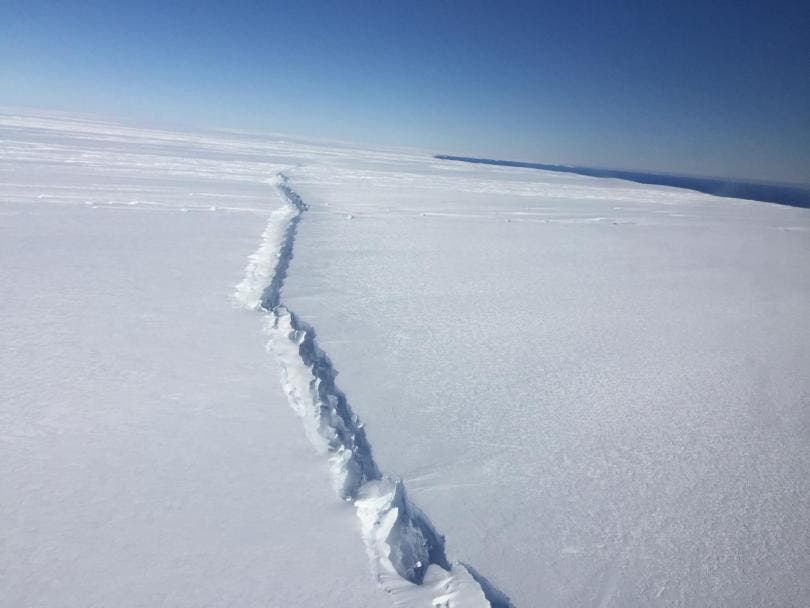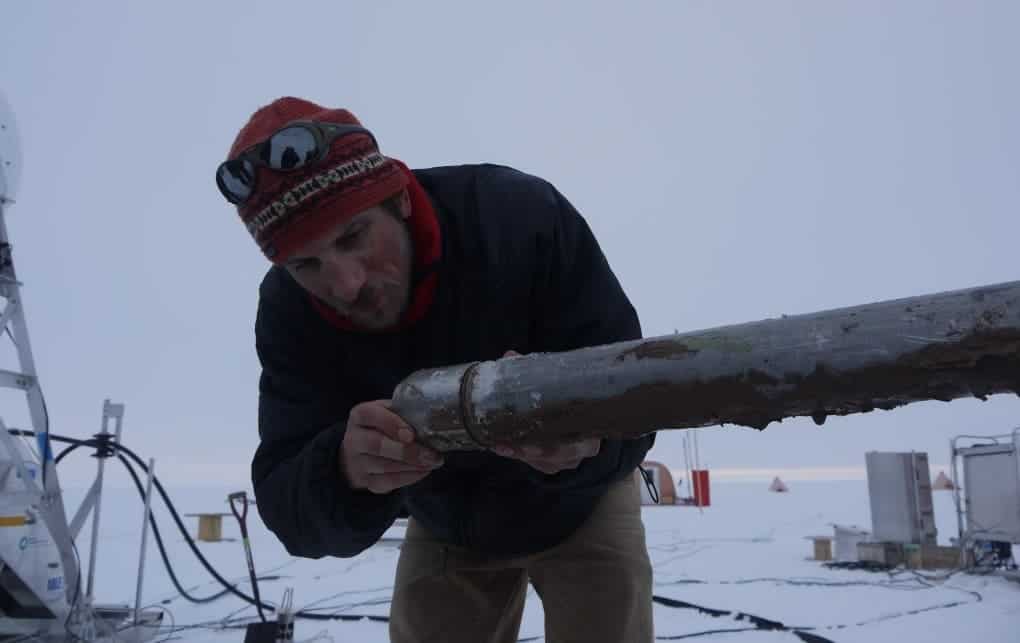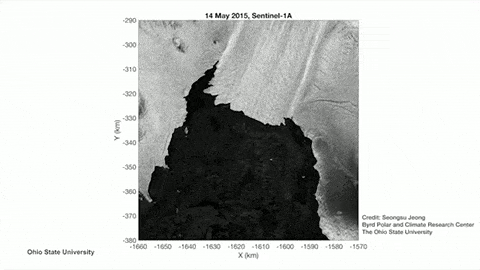
Last year, a huge 225-square-mile iceberg broke off the ever thinning Pine Island Glacier, in Antarctica. The iceberg served as a wake-up call for everyone, signaling the depreciating state of the glacier.
“It’s generally accepted that it’s no longer a question of whether the West Antarctic Ice Sheet will melt, it’s a question of when,” said Ian Howat, associate professor of earth sciences at Ohio State.
When Howat and colleagues analyzed satellite imagery in the intervening years before the iceberg broke off, they came across something unusual — shadows that were cast many miles inland, away from the warming waters of the Antarctic coast. The rift which formed some 20 miles away from the base of the ice shelf steadily grew in size over two years until it weakened the ice beneath enough to cause it to collapse.
“This kind of rifting behavior provides another mechanism for rapid retreat of these glaciers, adding to the probability that we may see significant collapse of West Antarctica in our lifetimes,” Howat said.
https://youtu.be/n25ubwdpccU
This is the first time researchers have direct evidence of a deep subsurface rift opening within Antarctic ice. However, we know from earlier research that similar breakups occurring in the Greenland Ice Sheet are caused by corridors through which warm water seeps through the bedrock, melting the ice from beneath. Because the bottom of the West Antarctic Ice sheet is actually beneath sea level ocean water can intrude inland and escape detection.
“Rifts usually form at the margins of an ice shelf, where the ice is thin and subject to shearing that rips it apart,” Howat explained. “However, this latest event in the Pine Island Glacier was due to a rift that originated from the center of the ice shelf and propagated out to the margins. This implies that something weakened the center of the ice shelf, with the most likely explanation being a crevasse melted out at the bedrock level by a warming ocean.”
The research suggests new valleys forming inland in Antarctica’s ice sheets could be hints of ice melting far below and, consequently, impending collapse. Howat notes that there are many such features observed by previous surveys suggesting the state of melting in Antarctica could be far more accelerated than previously believed.
Pine Island Glacier and its twin, the Thwaites Glacier, sit right beneath one of the most active ice flows on the continent. These act like cork bottles, keeping roughly 10 percent of the West Antarctic Ice Sheet from disintegrating and melting. The whole West Antarctic Ice Sheet itself is already considered unstable with some studies forecasting it will break down by 2100. If it melts, the ice sheet could raise global sea levels by 10 feet, putting large cities like New York or Miami under water. Overall, 150 million could be displaced.
Antarctic ice sheet decline evident since the 1940s — and it’s irreversible

Another study published in Nature documented how researchers drilled holes in the Pine Island Glacier ice shelf during December 2012 and January 2013. The cores they extracted revealed the lithology and composition of sediments trapped beneath the ice while lead and plutonium isotopes tell us when the ice retreat began, and what the temperature was like.
“What you find with the sediment cores is essentially a history of what has been going on at the bottom over the last couple of decades, because the sedimentation on the ocean floor is quite different once you have an ocean cavity from when you have ice actually touching the ground,” said University of Alaska, Fairbanks physics professor Martin Truffer for PBS.
The analysis of the sediment cores extracted from Pine Island showed the grounding line of the glacier has retreated roughly 30 miles in the last 70 years due to a sudden pulse of warm water in 1945. Despite the temperature recovered soon after, returning to a cool state, the cavity formed behind the grounding line ridge only got bigger.

These results suggest sudden climate forcing can cause irreversible melting.
“There’s an enormous amount of ice there,” said Truffler. “So, the question becomes, ‘Can you release that in 100 years or 1,000 years?’ I think the rate of retreat is where most of the uncertainty is right now.”







